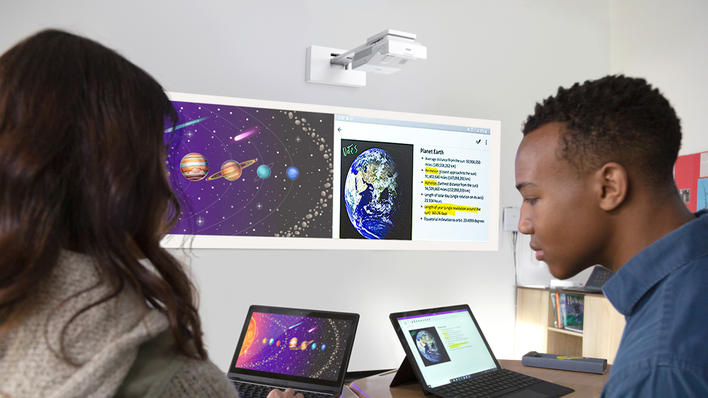Last spring, colleges and universities had no time to train their faculty to teach remotely. Professors had to overhaul their syllabi and learn the ins and outs of Zoom in a matter of weeks. Multiple surveys showed that students were unhappy with their classes, and more than 100 lawsuits have been filed against schools by plaintiff lawyers who argue that students deserve partial tuition refunds because instruction was subpar.
Institutions have been scrambling to help instructors do a better job this fall. Here is a look at the efforts at three institutions.
Boston University
Boston University has said it will invite almost all of its 35,000 students to its three campuses when the fall semester starts on Sept. 2. In early June, it announced that undergraduates could choose to take any class online. To support that plan, it’s introducing a model it’s calling Learn from Anywhere (LfA) that promises students will have a comparable experience whether they are present in the classroom or signing in remotely.
Each classroom will have a wall-mounted camera and microphones so remote students can see and hear the professor, who will interact with them synchronously through Zoom, according to Chris Dellarocas, associate provost for digital learning and innovation. Courses with at least 20 students will also have a classroom moderator, a student worker who will serve as a liaison for remote students. The moderator will alert the professor if someone online wants to ask a question or make a comment.
Boston University’s Center for Teaching and Learning has offered a series of one-hour Zoom training sessions to help professors use the LfA model, including workshops on using Zoom, creating assessments and engaging remote students in discussions. Faculty coaches who receive 16-20 hours of training in using the model will serve as peer mentors for their colleagues. So far, 148 faculty members have gone through the coach training.
But many faculty members have argued that the university is sacrificing a high-quality remote-learning experience for its students by requiring all instructors to follow the LfA model. Pary Fassihi and Jason Prentice, two senior lecturers in the writing program, compiled a literature review of the model, also known as “synchronous hybrid learning.” They concluded that BU instructors will be forced to struggle with a number of new challenges that will increase their workload and leave less class time for learning. With only weeks of training, professors will have to troubleshoot technological issues in real time. Further, they will have to split their attention between their in-person and remote students, who won’t be able to interact with each other.
Faculty also object to BU’s policy requiring professors to teach in person unless they apply for a personal or medical exemption. More than 600 instructors at schools across the U.S. have objected to similar policies. BU won’t say how many faculty members requested an exemption and how many will ultimately teach in person.
Michael Prince, an associate professor of English at BU, learned on July 23 that he would be allowed to teach remotely. He plans to make a number of adjustments to his two English courses next semester to adapt to the online environment, including adding one-on-one Zoom meetings and guest lectures to diversify course content. But he says he hasn’t done any of the LfA workshops because he isn’t planning to teach live classes, and he has received no guidance from the university on strategies for teaching remotely.
“It’s four weeks to the beginning of the semester, decisions have just been made as to who will be and who will not be in the classroom, and we’ve been fighting this decision up till now. So all the improvements we might have been making on what we did in the spring didn’t happen,” he says. “And it couldn’t happen because BU decided they would go with a whole different technological setup that no one’s ever used before.’’
Amherst College
Amherst College, an elite private school in western Massachusetts with 1,850 undergraduates, has announced it will bring 60% of its students to campus. Most will be freshmen and sophomores. Provost and Dean of the Faculty Catherine Epstein says faculty will have the option to use a synchronous hybrid learning model, divide their classes into remote and in-person sections, or move their classes entirely online.
She says 90% of faculty are enrolled in online teaching workshops this summer. For professors teaching a class with under 35 students, Amherst’s Center for Teaching and Learning is running a six-week online course that focuses on building community in discussion-heavy courses. Instructors meet on Zoom once a week for 90 minutes to discuss how to welcome new students in an online environment, build self-reflection into class work and increase transparency of course structure and content. The course is also experiential: Faculty collaborate in breakout groups, post on discussion boards and complete weekly assignments.
For classes with more than 35 students, which will all be remote, Amherst has partnered with 2U, a publicly traded company based in Lanham, Md., with revenue of $575 million last year. The pandemic has driven its stock up 68% since March. Known as an online program manager, it provides a cloud-based software platform to deliver classes. 2U works with more than 70 universities to build online courses and degree programs and to market them to prospective students. It reportedly charges schools as much as 65% of their tuition fees. Amherst won’t say what it’s paying for 2U’s services. A 2U spokesperson says that it is not taking a cut of Amherst’s tuition charges but won’t comment further on the fee arrangement.
“They understand that online learning isn’t translating three hours of instructional time in the classroom to Zoom,” Epstein says. “We felt like they had a lot of expertise to offer us.”
2U’s structure allows faculty to create a “guided path” for students through a mix of asynchronous video content, interactive assignments, and synchronous discussions, says CEO Chip Paucek. The company provides every professor with a video production toolkit called Studio in a Box, which includes a webcam, microphone, backdrop and stand to help professors record high-quality videos. It also offers 24/7 tech support for instructors and students, and it runs its own series of workshops training faculty to teach on its platform.
Psychology professor Catherine Sanderson says she has completely redesigned her fall course with personalized feedback from 2U. The company sent her nine pages of recommendations for adapting her introduction to social psychology class to an online format based on the syllabus. In the past, Sanderson’s class was largely lecture-based, and two exams determined 50% of students’ grades. Based on 2U’s analysis and advice from its workshops, she will divide her lectures into 6-to-10-minute video modules, add small-group work and replace large assessments with low-stakes quizzes, strategies designed to reduce pressure and increase student engagement.
Sanderson was initially intimidated by the switch to remote teaching, but she says she feels more confident going into the fall. “I’m going to actually have a class that is very different but in some ways more effective, and I think one of the things that’s been exciting is that [2U] is really forcing all of us to rethink our teaching,” she says.
California State University
California State University’s pre-pandemic network of online programs gave it a leg up in the transition to remote learning. The university system had more than 4,000 online course sections in fall 2019 among its 23 campuses. “What that means is that we have faculty with experience teaching online, who could quickly be tapped to become mentors for their peers,” says Emily Magruder, director of the Institute for Teaching and Learning, CSU’s faculty development center. CSU was also one of the first universities in the country to announce that it would have primarily remote instruction in the fall, which has given faculty time to adapt their courses without worrying about the logistics of teaching in person.
Thousands of faculty are taking university-wide professional development workshops, and many individual campuses also require instructors to take their own modules on remote teaching. On top of technical workshops focused on creating online quizzes and using Zoom, the training also spotlights issues of equity and access. A major challenge last semester, says Magruder, was that many students lacked laptops, access to the internet and an environment suitable for studying. CSU sent out laptops and tablets to students in the spring, but instructors are now incorporating inclusivity into their course structure.
To accommodate students who struggle with internet access, Cal State LA offered a webinar on low-bandwidth teaching, which encouraged faculty to rely more on email, powerpoint slides, group chats and collaborative documents instead of high bandwidth video lectures. At CSU San Marcos, a suburban campus with 16,000 students 35 miles north of San Diego, many workshops have a focus on race, diversity and holding challenging conversations in virtual environments, says Tumay Tunur, assistant professor of kinesiology and Faculty Center fellow for diversity, conclusion and social justice.
Tunur helped develop some of the workshops and she says she has seen faculty make big shifts in their course structure after brainstorming with other instructors. CSU San Marcos also offers faculty the opportunity to redesign their syllabus, submit it for peer review and receive a $1,000 stipend at the end of their seven-hour training, which has incentivized professors to make concrete changes to their courses.
As a kinesiology (human movement) professor, Tunur has benefitted from CSU-wide faculty collaboration. She participates in three groups of kinesiology instructors who come from CSU’s 23 campuses. The groups meet remotely either biweekly or once a month to share teaching resources. When Tunur was worried that she would not be able to teach the lab section of her motor control and learning course in the fall, another faculty member recommended a website that had all the labs she needed on a virtual platform.
For her two fall courses, Tunur plans to build on her experience in the spring and incorporate more gamification into her teaching. Students will work through asynchronous modules at their own pace, earn experience points for completing assignments and receive rewards for leveling up, including virtual badges. She will do away with exams and instead have each student learn to mastery. They can take a quiz as many times as they need until they get 100%. When she introduced this model last semester, she says students appreciated the flexibility of the asynchronous modules and reported lower stress levels.
“One of the things that may have come out of this moment is that our faculty are learning more about the conditions in which students are learning, and all learning how to be more responsive to that,” says Magruder. “Everything we’re learning now will inform all of our teaching in any modality going forward.”
This article was written by Chelsey Zhu from Forbes and was legally licensed through the Industry Dive publisher network. Please direct all licensing questions to legal@industrydive.com.
![]()



